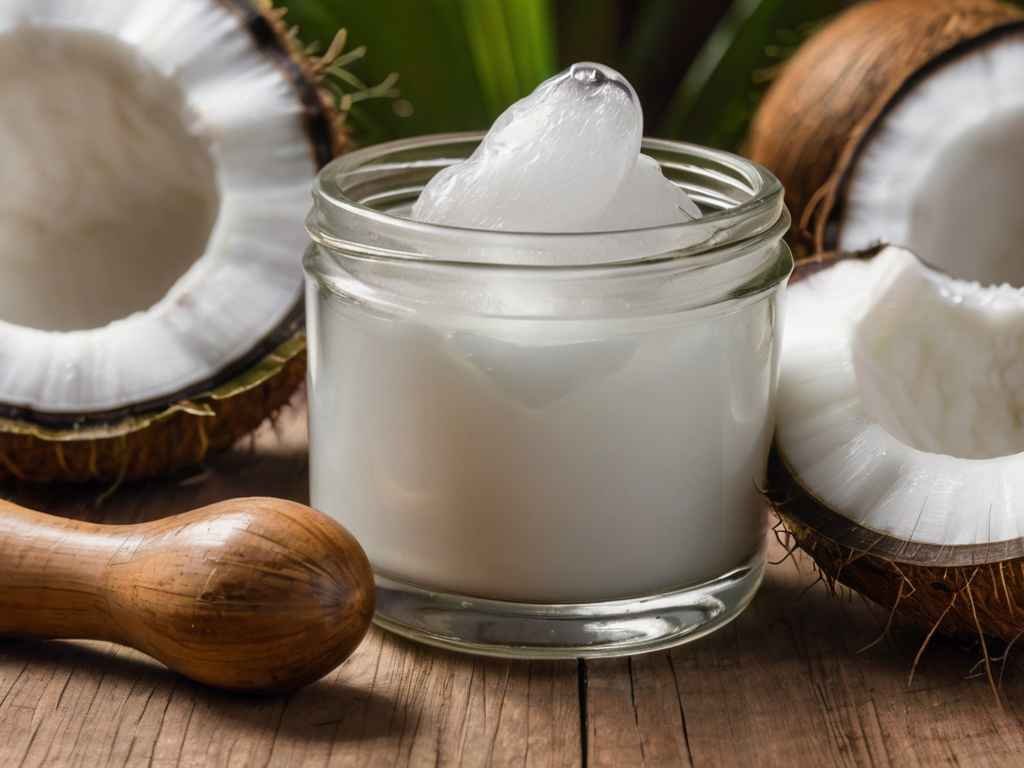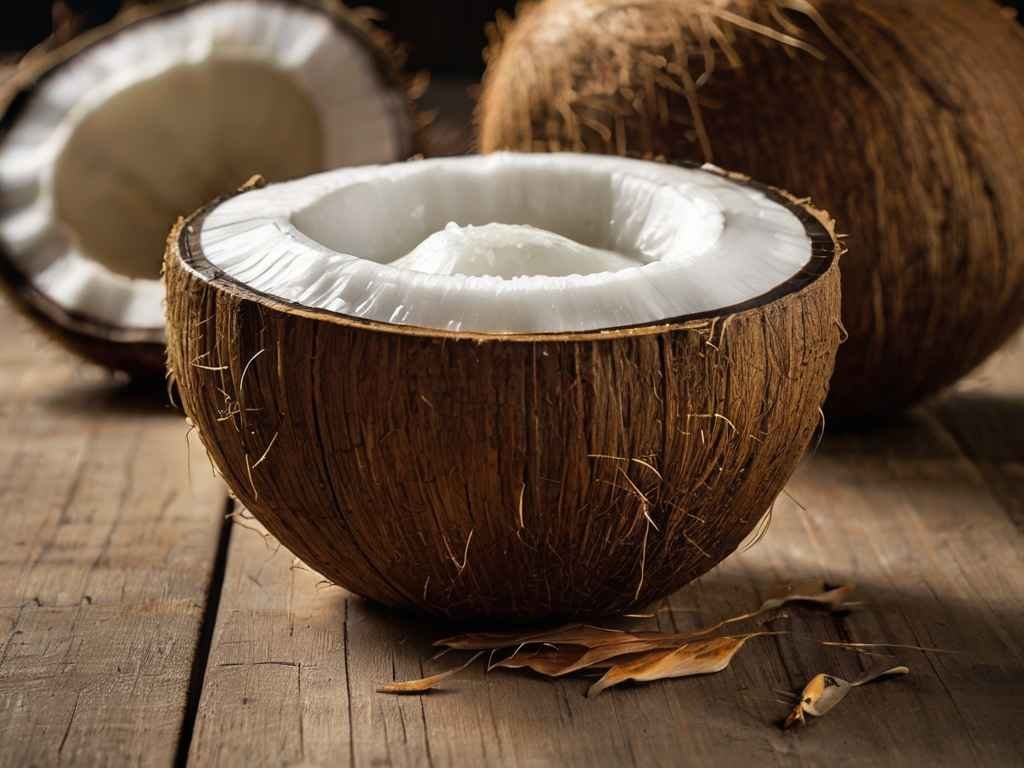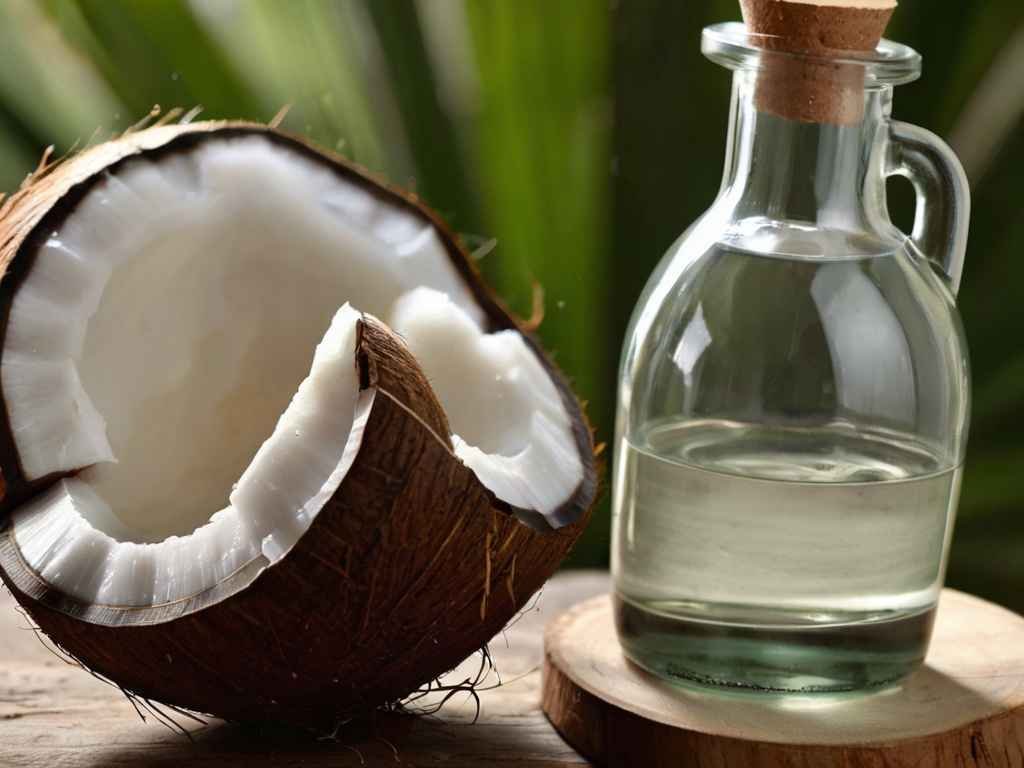Liquid coconut oil, also known as fractionated coconut oil, has emerged as a popular choice for various purposes due to its unique characteristics and health benefits. This article delves into the production process and what is liquid coconut oil, its uses, and potential benefits.
Characteristics and Production Process
It is distinct from traditional coconut oil as it remains in liquid form even at lower temperatures. This is achieved through a process called fractionation, which involves separating different components of coconut oil based on their melting points.
The production of liquid coconut oil begins with the extraction of coconut oil from the meat of mature coconuts through pressing or solvent extraction methods. The raw coconut oil contains a mixture of saturated fats, including medium-chain triglycerides (MCTs) such as lauric acid, caprylic acid, and capric acid.
To create liquid coconut oil, the raw coconut oil undergoes fractionation, typically using a process called cold processing or steam distillation. During fractionation, the oil is heated and then cooled rapidly, causing the different fatty acids to separate based on their melting points. The solid fats, including those high in lauric acid, are removed, leaving behind the liquid fraction rich in caprylic acid (C8) and capric acid (C10).
This liquid fraction, also known as MCT oil, remains stable and clear at room temperature, with a prolonged shelf life compared to traditional coconut oil. It retains the beneficial properties of MCTs while eliminating the saturated fats that solidify at cooler temperatures.

What is liquid coconut oil Nutritional Profile
Compared to solid coconut oil, it contains predominantly medium-chain triglycerides (MCTs), particularly caprylic and capric acids. These MCTs are known for their quick digestion and absorption by the body, making coconut oil a popular choice among those seeking immediate energy boosts. Additionally, it retains the healthful properties of solid coconut oil, including antimicrobial and anti-inflammatory effects.
Explore: Liquid Coconut Oil Benefits
Buying Guide
When purchasing liquid coconut oil, it’s essential to consider factors such as the extraction method, purity, and intended use. Opt for organic, cold-pressed varieties to ensure minimal processing and maximum nutrient retention. Look for reputable brands that adhere to quality standards and offer transparent labeling regarding ingredients and production methods. Additionally, consider your specific needs, whether for culinary purposes or skincare, when selecting the most suitable coconut oil product.
Storage and Shelf Life
To preserve the quality of liquid coconut oil, store it in a cool, dark place away from direct sunlight and heat sources. Unlike solid coconut oil, which may solidify at lower temperatures, liquid coconut oil remains stable and pourable, making it convenient for everyday use. Proper storage extends the shelf life of liquid coconut oil, ensuring optimal freshness and flavor retention over time.
Uses of Liquid Coconut Oil:
- Culinary Applications: Liquid coconut oil is a versatile cooking oil with a high smoke point, making it suitable for sautéing, frying, and baking. Its neutral flavor and light texture make it a preferred choice for dishes where the distinct taste of coconut is not desired. Additionally, it can be used in salad dressings, smoothies, and as a drizzle over dishes for added nutritional benefits.
- Cosmetic and Skincare: Liquid coconut oil is a popular ingredient in cosmetic and skincare products due to its lightweight texture and moisturizing properties. It is commonly used in lotions, creams, hair conditioners, and massage oils. Its non-greasy feel and quick absorption into the skin make it a versatile option for various skincare needs.
- Therapeutic and Health Benefits: The MCTs present in liquid coconut oil offer several health benefits, including improved cognitive function, weight management, and enhanced athletic performance. MCTs are readily converted into ketones by the liver, providing a quick and efficient source of energy. This makes coconut oil a popular choice for individuals following ketogenic diets or seeking sustained energy without a spike in blood sugar levels.
How to Make Liquid Coconut Oil?
While commercial production involves specialized equipment and processes, it is possible to make a DIY version at home using fractionation methods. One common method involves refrigerating raw coconut oil until it solidifies, then slowly heating it until it melts completely. Next, the melted coconut oil is allowed to cool gradually, and the solid fats are skimmed off the top, leaving behind the liquid fraction.
Explore: How to Make Liquid Coconut Oil ?

Potential Downsides and Precautions
While coconut oil offers numerous benefits, it’s essential to be aware of potential downsides. Some individuals may have allergies or sensitivities to coconut oil, so it’s advisable to perform a patch test before using it extensively. Additionally, due to its liquid form, proper storage is crucial to prevent oxidation and maintain freshness.
Conclusion
Liquid coconut oil, produced through the fractionation process, offers a versatile and stable alternative to traditional coconut oil. Its neutral aroma and flavor, combined with its numerous culinary, cosmetic, and therapeutic uses, make it a valuable addition to any household. Whether used in cooking, skincare, or for its potential health benefits, liquid coconut oil continues to gain popularity among consumers worldwide.
FAQs
- Is liquid coconut oil the same as traditional coconut oil?
- While both products are derived from coconuts,it undergoes a fractionation process to remove certain components, resulting in a clear, odorless, and liquid consistency.
- Can liquid coconut oil be used for frying?
- Yes, it has a high smoke point and is suitable for frying and sautéing at high temperatures.
- Is liquid coconut oil comedogenic?
- It is generally considered non-comedogenic, meaning it is unlikely to clog pores. However, individual reactions may vary, so it’s advisable to patch-test before extensive use.
- How should liquid coconut oil be stored?
- It should be stored in a cool, dark place away from direct sunlight to prevent oxidation and maintain its freshness.
- Can liquid coconut oil be used for oil pulling?
- Yes, it can be used for oil pulling, a traditional oral hygiene practice believed to promote dental health.


1 Comment
[…] Explore: what is liquid coconut oil […]